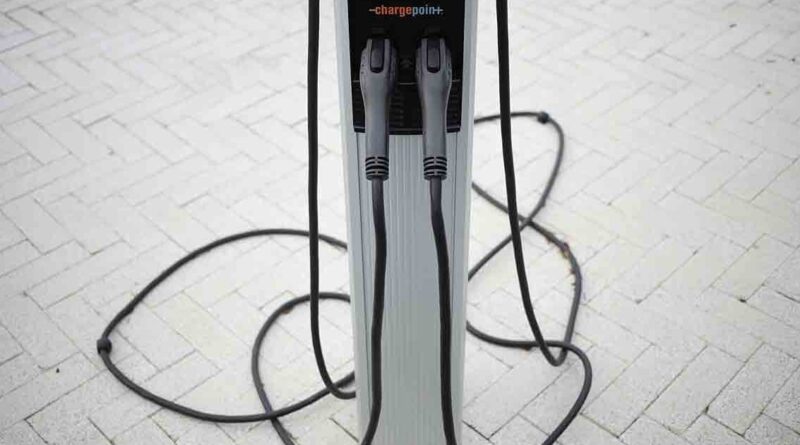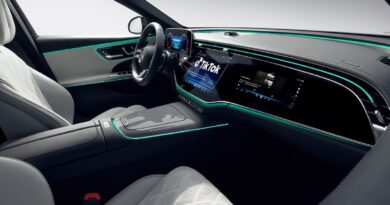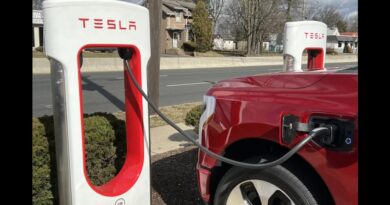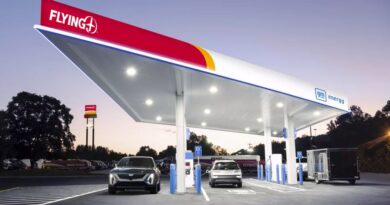Why so many electric car chargers in America don’t work
In a nondescript office park in San Jose, Calif., ChargePoint Holdings Inc. runs a torture lab of sorts. It’s here that the operator of the U.S.’s largest network of EV chargers subjects its products to extreme temperatures and rain, and puts them through simulated dust storms and earthquakes. Pulley systems tug on charging cords over and over, mimicking years of use, and a different device slams a steel ball against chargers to see if they’ll crack. Every year, the lab tests about 3,300 chargers, which then can’t be deployed in the wild.
“You take this thing that’s expensive, and you basically burn it up,” ChargePoint CEO Pasquale Romano said, as a row of machines nearby simulated plugging and unplugging the chargers’ connectors.
ChargePoint’s process is geared at fixing one of the EV transition’s most pressing problems: public charging stations that often don’t work. Parts break, information screens freeze, payment systems malfunction. Copper thieves steal the cords. Vandals damage charging plugs or, in one infamous instance, stuff them with ground meat. In the U.S., nascent networks mean that if the machines at one station aren’t working, there may not be another nearby.
A decade ago, early EV adopters were willing to put up with unreliable public chargers. Now, however, the problem threatens President Joe Biden’s EV ambitions. Biden has made electric cars a cornerstone of his climate and economic policies, devoting $5 billion to the buildout of a charging network along major roads and $2.5 billion to charging within communities. The goal is convincing every American driver to go electric. But it’s a leap of faith for many — one they may not be willing to make if they don’t trust that public chargers will work.
“We’re really at the point right now where we have to address these issues before we get further along in EV adoption,” said Brent Gruber, executive director of global automotive research for J.D. Power. “The mindset is changing, from the early adopters who expected some bumps in the road, to the mainstream consumer who is not willing to overlook those problems.”
J.D. Power regularly surveys EV drivers in the U.S. about their charging experiences, working in collaboration with the PlugShare app that many drivers use to locate stations. Two years ago, 14.5 percent of respondents said they’d been unable to charge at a public station. Now it’s 21.4 percent. “It’s definitely heading in the wrong direction,” Gruber said.
It’s not just a problem in the U.S. Zapmap Ltd., whose app tracks live data from about 70 percent of public chargers in the U.K., found last year that 6 percent were out of service at any given moment. The company’s annual EV charging survey identified reliability as the top concern for EV drivers in the country. A Boston Consulting Group survey released this year found reliability to be the main criteria drivers in China use when choosing a public charging station, ranking it above speed, ease of use and price.
There isn’t a single reason for EV charger failures. Some of the problems, particularly with older machines, can be chalked up to a new technology going through the usual learning curve of improvements, all while sitting outside, exposed to the weather. There have been cycles of needed upgrades, such as replacing modems to deal with 5G wireless internet service. The myriad networks, retail outlets and garage owners who own the machines don’t always stay on top of maintenance. And chargers must communicate with a rapidly expanding variety of cars.
To that end, the precise scope of the problem isn’t known. EV drivers face a complex landscape of competing charging companies, each with its own stations and app, and there is no central repository of data on station performance. One widely cited 2022 study of fast-charging stations in the San Francisco Bay Area (excluding Tesla Inc.’s Superchargers), found that about 25 percent of the 657 plugs weren’t working. While J.D. Power doesn’t disclose reliability rankings, Gruber said the worst-performing charging company leaves drivers unable to plug in about 39 percent of the time.
“With public charging, it’s a bit of the wild, wild West,” he said.
Tesla proved that reliable charging is possible. The all-electric automaker runs a global network of 45,000 Superchargers, which can add up to 200 miles of range in just 15 minutes. Tesla consistently gets the highest customer-satisfaction marks of any charging company in J.D. Power’s surveys, Gruber said. Its drivers report charger downtime of just 3 percent.
But Tesla has the advantage of keeping everything in-house. Until recently, Superchargers could only be used by Tesla cars, and didn’t need to work with the growing array of other EVs and batteries. Tesla also owns its Supercharger network, whereas many of the public chargers installed over the past decade are owned by whoever owns the parking lot where they’re located. Such property owners, Gruber said, don’t have as strong an incentive to maintain their machines.
As charging networks expand, companies that deploy public chargers insist they are getting more reliable, not less. Property owners who buy chargers from companies like Blink Charging Co. and ChargePoint often sign service contracts for those companies to maintain or replace the chargers as needed. Some site owners let those agreements lapse over time, allowing the machines to fall into disrepair, Gruber said.
Charging companies are also designing newer machines with individual components that can be swapped out in the field if they malfunction. Pasquale likens ChargePoint’s chargers to a stack of Lego blocks, allowing something like the modem to be upgraded over time while the rest of the device stays in place.
“These chargers aren’t like a phone where you’re going to replace it every couple of years because the technology moves,” he said. “These chargers are going to last the better part of a decade, if not more.”
Charging companies also acknowledge that the first few waves of public chargers installed over the past 10 years weren’t as dependable as they needed to be.
“Everyone’s first-generation equipment was just that — first generation,” said Michael Farkas, founder and board member of Blink, one of the largest charging companies in the U.S. “People didn’t really understand all the impacts that being out in the elements would have.”
Farkas is particularly critical of the first few generations of “DC fast chargers,” which can top off an EV battery far faster than more common “level 2” chargers.
“Complete garbage,” he said. “Lots of maintenance required. Offline all the time. We stopped deploying them until we were satisfied the issues were resolved.”
As EV adoption continues to pick up in the U.S., the majority of car charging will take place at home, a convenience that is itself one of the chief selling points for electric driving. But even with the average U.S. EV range approaching a record 300 miles, public charging stations will still be needed for longer trips and garage-less drivers. That’s why the Biden administration this spring established a lengthy set of rules aimed squarely at broken chargers. Among them: Any federally funded charger must be functional more than 97 percent of the time.
Source : Autonews.com




